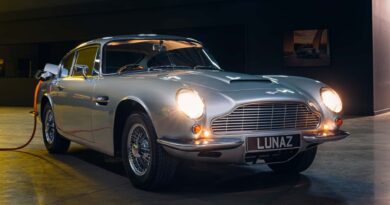Here’s How You Select Gears In The Tesla Model 3 Highland If The Screen Is Dead
With the big reveal of the refreshed Tesla Model 3 out of the way, it’s time for curious enthusiasts and bloggers alike to find out all sorts of interesting details about the facelifted EV that went under the radar in the official images and videos.
One obvious fact about the revamped all-electric sedan is that it no longer has physical stalks on the steering column, like the pre-facelift Model 3 did, with Tesla moving some of the controls on the steering wheel itself and some on the central touchscreen.
On the old EV, gear selection was the main job of the right-hand side stalk, with drivers pushing down for drive, up for reverse, and pressing on the end for park. Now, though, without a physical stalk, the user will have to use the screen to choose a gear, like it is on the revamped Model S and Model X.
Gallery: New Tesla Model 3
It’s not the end of the world, but as is the case with a TV or smartphone screen, the central touchscreen in the facelifted Model 3 might – on rare occasions – konk out, making it impossible to drive anywhere because one couldn’t select drive or park. But here is where a set of physical buttons comes into play.
The Model S and Model X have a strip of capacitive buttons around the hazard lights button on the center console, but the revamped Model 3 doesn’t have that. Instead, a pair of wireless charging trays have been integrated below the screen.
In the so-called Project Highland Tesla, these buttons have been relocated on the headliner, between the two sun visors, and next to the rearview mirror, as revealed by a Chinese features pamphlet spotted by Teslarati.
The same document reveals the performance specs of the refreshed Model 3, with the rear-wheel drive variant getting an electric motor that makes 194 kilowatts (260 horsepower) and 250 pound-feet (340 Newton-meters) of torque, all while weighing 3,880 pounds (1,760 kilograms). At the same time, the dual-motor all-wheel drive version has 331 kW (443 hp) of power and 412 lb-ft (559 Nm) of torque.
As always, we’d like to know what you think about this, so head over to the comments section below to give us your thoughts.
https://www.youtube.com/embed/4ZNeS1UzaFs?si=wVlMWUWDz0uUiOv0
Source: Tesla via Teslarati
Source: Read Full Article




